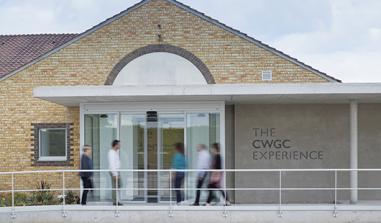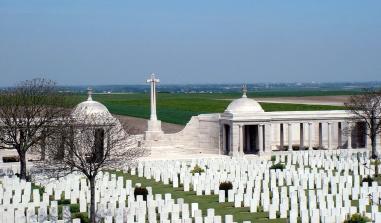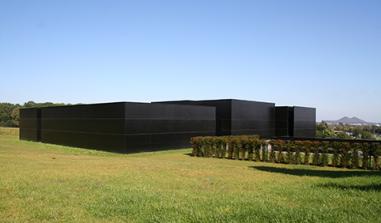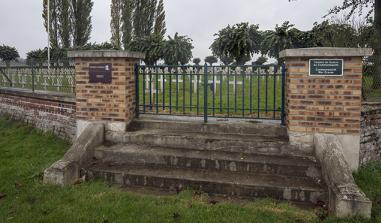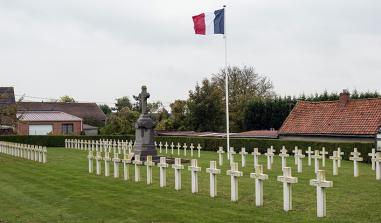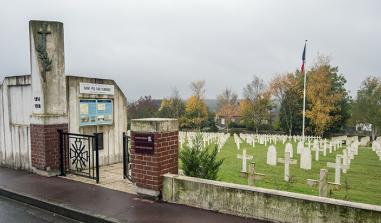Arras
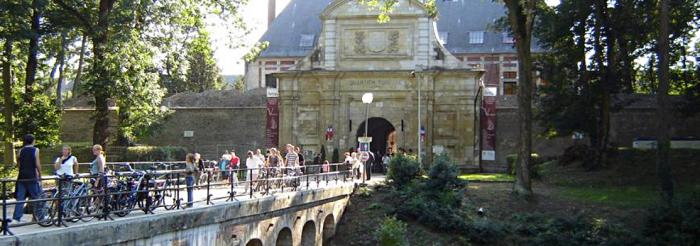
The entrance to the Citadel of Arras. Source: http://arras-france.com
The Citadel, the British Memorial and the New Zealand tunnels in Arras.
Nicknamed the Belle Inutile (the useless beautiful), the citadel is a Vauban structure built between 1668 and 1672. Pentagonal in shape, it is flanked on each corner by huge bastions protected by free-standing fortifications, part of which is preserved. The white stone Porte Royale faces the town and emphasises the power of the new sovereign. The buildings necessary for life in the Citadel surround the esplanade. Aligned with the Porte Royale, the arsenal, whose openings are emphasised by the stone décor, has a privileged place in the fort's spatial organisation The chapel, a gem of Baroque architecture, still has a brick façade richly decorated with fluted engaged columns, medallions, flame ornaments, etc.
The Chemin des Douves path takes visitors on a trail around the Citadel, to the Crinchon, a stream that was used to fill the ditches with water. The citadel itself is owned by the French Army. It can be visited as part of a tour organised by the Tourist Information Office in the Town Hall. Despite the modifications over the centuries, the Arras citadel is still testimony to Vauban's art.
There is a memorial in the Faubourg d'Amiens cemetery, not far from the citadel. It commemorates the deaths of 35,000 men – British, New Zealand and South African – who fell between spring 1916 and 7 August 1918 and who do not have their own tomb. The names of the dead are engraved on stone slabs affixed to the walls of the cloister with Doric columns, built by Sir Edwin Luytens. Faubourg d'Amiens cemetery on Boulevard du Général de Gaulle also has 2,652 identified tombs.
Opposite the Memorial, on the wall of the cloister is the "Flying Services Memorial", engraved with the names of the Royal Naval Air Service, the Royal Flying Corps, the Royal Air Force and the Australian Flying Corps.
Part of the Arras Memorial, erected in the Faubourg d'Amiens cemetery, is considered a homage to the first aviators who lost their lives in combat. The Aviators' Memorial is noticeable as soon as you enter the cemetery; it consists of a raised base surmounted with a globe.
The names of all the airmen who fell on the Western front and whose tombs are unknown are engraved on each side. These include the names of 46 Canadians. The Canadians were particularly distinguished in the air war. Twenty-five thousand of them served as pilots, lookouts, and mechanics in the British Forces. Canadian airmen received over eight hundred decorations and citations, including three Victoria Crosses, for their bravery. Out of the "aces" of the RAF, five were Canadian. Pilots like W.A. "Billy" Bishop, W.G. Barker, Raymond Collishaw and A.A. McLeod were famous for their boldness and their feats.
The New Zealand tunnels form a complex system of underground shafts and caves which extend from Arras to Bapaume and Cambrai. In 1916 and 1917, the New Zealand company of tunnellers extended an existing network of old caves with shafts to reach No Man's Land, under the German trenches. The site was rediscovered in 1996.
Website of the regional tourist board for the Nord
Quizz : Forts and citadels
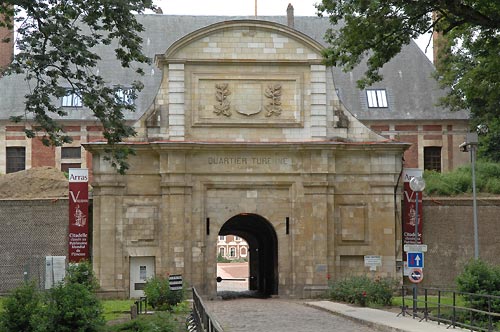
Entrée de la citadelle d'Arras. Source : Jean-Pierre Le Padellec SGA/DMPA
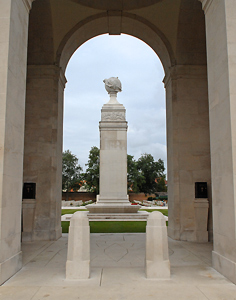
Mémorial britanique d'Arras. Source : Jean-Pierre Le Padellec SGA/DMPA
Practical information
Boulevard du général de Gaulle 62000
Arras
Tél : 03 21 21 87 00 Fax : 03 21 21 87 87
Accessible toute l'année


